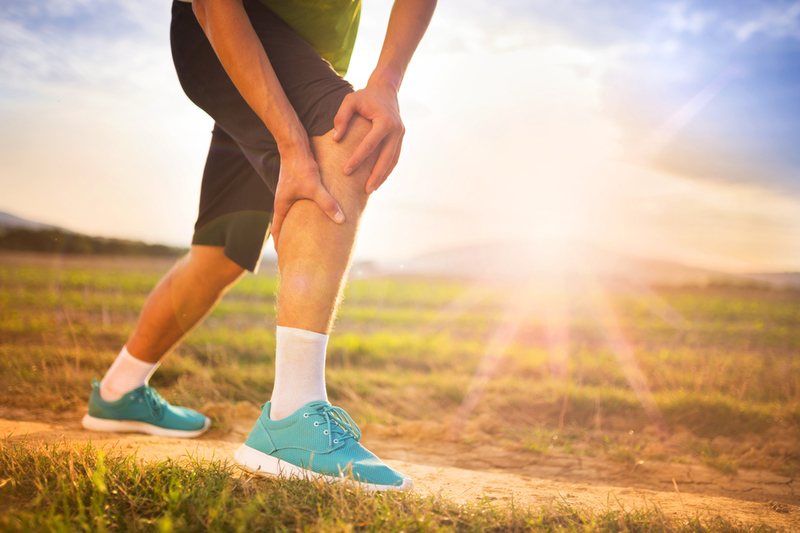Researchers find strenuous exercise safe for people at high risk of knee arthritis: JAMA
ANI May 05, 2020
While strenuous physical activities such as jogging, cycling, singles tennis and skiing may be challenging to people at high risk for knee osteoarthritis (OA), a recent study that followed high-risk individuals for 10 years showed vigorous exercise did not increase their risk of developing OA and may even protect them from it.
For our comprehensive coverage and latest updates on COVID-19 click here.
 "Our study findings convey a reassuring message that adults at high risk for knee OA may safely engage in long-term strenuous physical activity at a moderate level to improve their general health and well-being," said Alison Chang, associate professor of physical therapy and human movement sciences at Northwestern University Feinberg School of Medicine. The results of the study will be published in the journal JAMA Network Open.
"Our study findings convey a reassuring message that adults at high risk for knee OA may safely engage in long-term strenuous physical activity at a moderate level to improve their general health and well-being," said Alison Chang, associate professor of physical therapy and human movement sciences at Northwestern University Feinberg School of Medicine. The results of the study will be published in the journal JAMA Network Open.
Osteoarthritis is the most common joint disorder in the United States, affecting an estimated 32.5 million adults, according to the Centers for Disease Control. The knee is the most commonly affected joint. The lifetime risk of developing symptomatic, radiographic knee OA (as diagnosed on an x-ray) is approximately 38% to 45%. The estimated median age of diagnosis is 55 years.
In this observational study of 1,194 persons at high risk for but without radiographic evidence of knee OA who were followed for up to 10 years, long-term participation in strenuous physical activities was not associated with risk of developing radiographic knee OA. In fact, the vigorously exercising individuals in the study were 30% less likely to develop OA, although the number was not considered statistically significant. The activities included jogging, swimming, cycling, singles tennis, aerobic dance and skiing. Persistent extensive sitting was not associated with either elevated or reduced risk.
Excessive body weight, history of joint injury or surgery, ageing and chronic knee symptoms place an individual at elevated risk for developing knee OA. Although regular physical activity and exercise provide multiple health benefits, uncertainty about whether vigorous physical activity participation could cause pain and further tissue damage is a common concern. The researchers' analysis showed nearly 50% of the adults at high risk for this disease did not engage in any strenuous physical activity over eight years. "People suffering from knee injuries or who had arthroscopic surgical repair of ACL or meniscus are often warned that they are well on the path to developing knee OA," Chang said. "They may be concerned that participating in vigorous activities or exercises could cause pain and further tissue damage. To mitigate this perceived risk, some have cut down or discontinued strenuous physical activities, although these activities are beneficial to physical and mental health."
How the study worked:
The study analysed data from the Osteoarthritis Initiative, a longitudinal observational study of men and women (age range: 45 to 79 years) with or at an increased risk of developing knee OA, recruited from four communities in the U.S. At the study onset and subsequent visits for up to 10 years of follow-up, the participants received X-rays for both knees to determine knee OA disease status and reported their weekly strenuous physical activity participation and sitting patterns.
In 1,194 participants who had no knee OA confirmed by X-ray at the study onset, researchers identified four distinct long-term trajectory patterns of strenuous physical activity participation and three distinct trajectory patterns of extensive sitting over an 8-year period. They then examined if long-term engagement of strenuous physical activity or extensive sitting behavior were each associated with risk of developing knee OA.
"Adults at high risk for knee OA may safely engage in long-term strenuous physical activity at a moderate level," Chang said. "Health care providers may consider incorporating physical activity counselling as part of the standard care for high-risk individuals at an early stage when physical activity engagement is more attainable."
-
Exclusive Write-ups & Webinars by KOLs
-
Daily Quiz by specialty
-
Paid Market Research Surveys
-
Case discussions, News & Journals' summaries